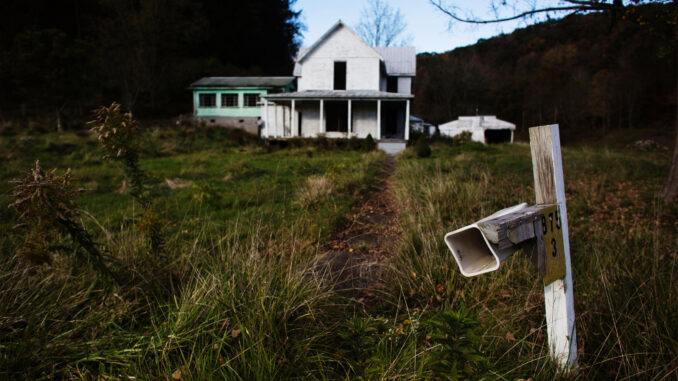

Courtesy of Brett Ziegler | Students in rural communities struggle to complete online classwork without reliable internet connections at home.
09/03/2020
Noah Wilbur | Opinions Editor
With doors opened wide at schools around America, most institutions of primary and secondary education have chosen to introduce several aspects of online learning into their curriculums for the Fall semester. Students are adapting to an unconventional and seemingly speculative style of schooling that is unproven as an effective alternative to face-to-face instruction.
Quickly emerging as the primary mode of education, the majority of Americans consider online learning to be the most logical approach for ensuring that students of all-walks-of-life receive an equal educational experience while also averting potential COVID-19 outbreaks.
However, I am here to inform you of a demographic in the U.S. that is certainly not receiving an equitable standard of education relative to others: the students living in rural communities.
Residents in these areas endure obsolete and largely inadequate internet infrastructure while modern cities reveling in urbanization enjoy advanced networking capabilities and high-speed connectivity.
The failure to upgrade existing broadband frameworks and other related hardware is attributed to a lack of investment as businesses discover that implementing new technology in rural America is costly and not nearly as lucrative.
In fact, a study conducted by Microsoft in 2018 found that around half of Americans do not have access to high-speed internet at home – approximately 164 million.
Making matters worse, one of the largest rural internet providers – Frontier Communications – recently filed for bankruptcy, citing increased costs of expanding broadband coverage as the primary determinant.
Unreliable connections, sluggish loading speeds and inaccessibility are a few of the challenges that must be overcome while online learning is continually integrated into the curriculum. Numerous reports have even recently emerged of students sitting in their cars near school facilities to obtain internet access for online exams, daily discussion board questions, and Zoom classes.
In short, rural communities simply do not possess the technological infrastructure necessary to provide and support an immersive, thorough and fulfilling learning experience.
For these reasons, local governments are faced with a particularly difficult decision: proceed with online learning and accept that hundreds of students cannot participate, or continue with traditional instruction and face the likelihood that hundreds of students and their families contract COVID-19.
It is evident now that schools in rural areas have elected to implement a blended approach, combining the flexibility of online learning with in-person classes – known as the Hybrid Model. Proponents insist that the incorporation of some physical class attendance assists in gapping the digital divide between urban and rural living.
Nevertheless, blended learning is wholly unfavorable and ineffective as students are still placed at an enormous disadvantage due to a lack of connectivity for the foreseeable future.
Whether it is a purely online experience or the hybrid approach, they will undoubtedly receive a substandard education in comparison to those residing in modern cities and towns.
We must ultimately urge state leaders and the federal government to join forces and address the antiquated internet infrastructure of rural America by providing the capital, resources and logistical expertise needed to upgrade broadband capabilities and increase the affordability of internet access.
These improvements hold the capability of positively impacting thousands of students in this country while simultaneously creating new opportunities and enhancing quality-of-life for even more.
